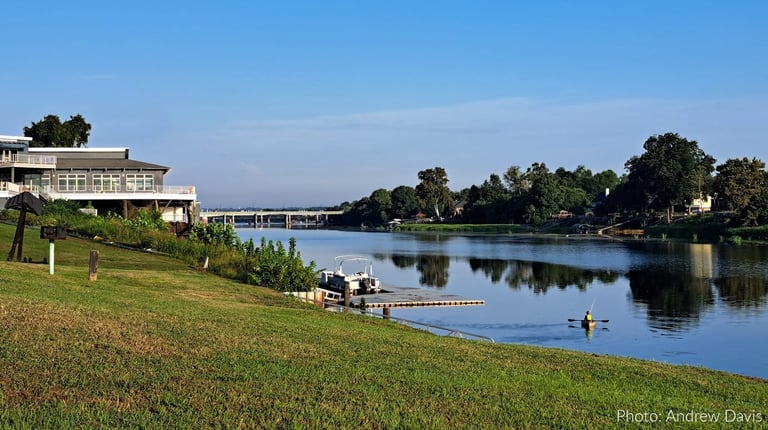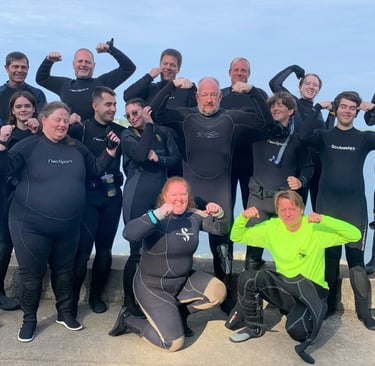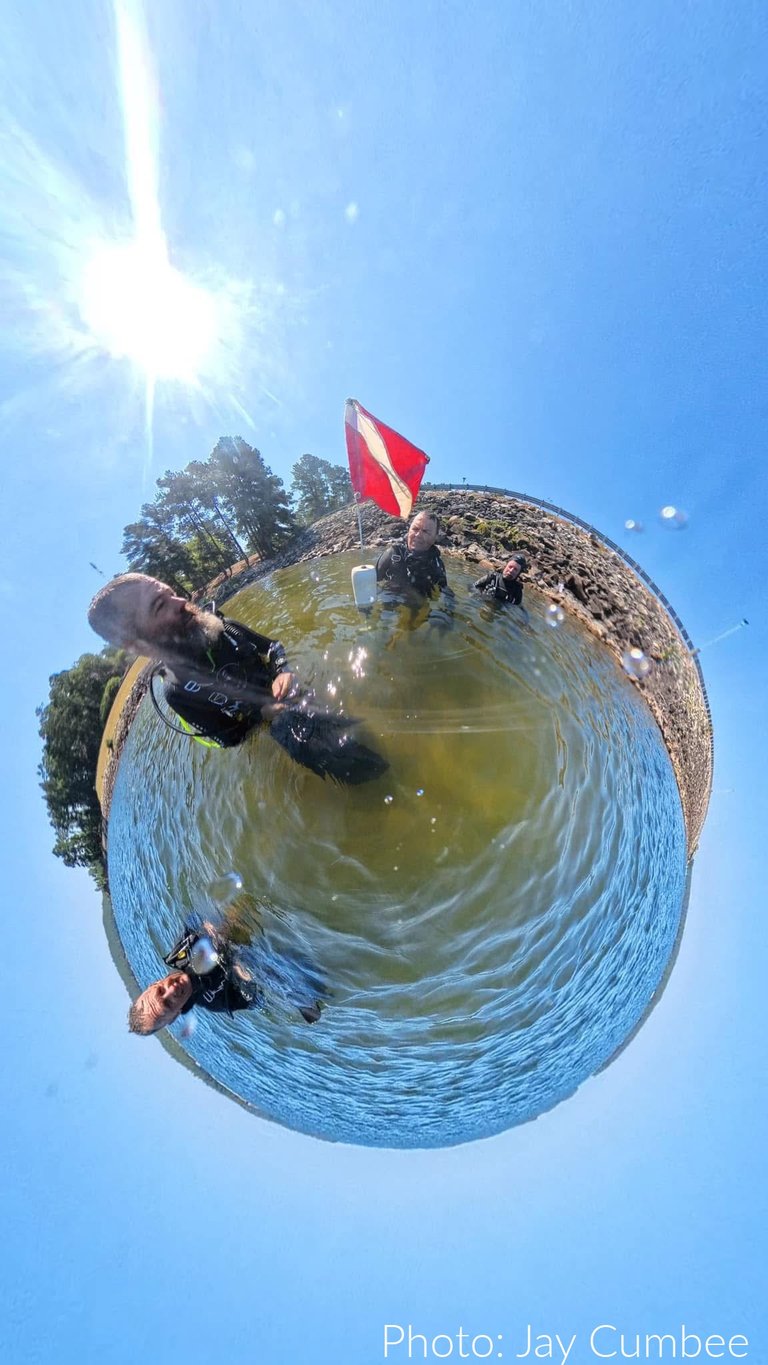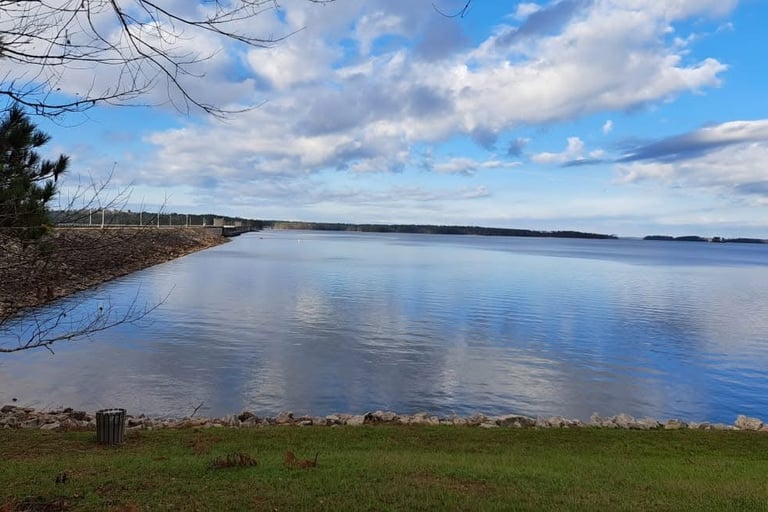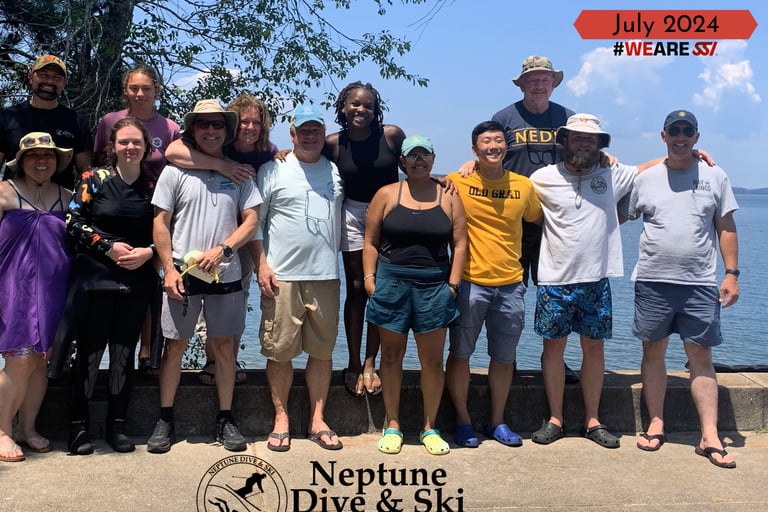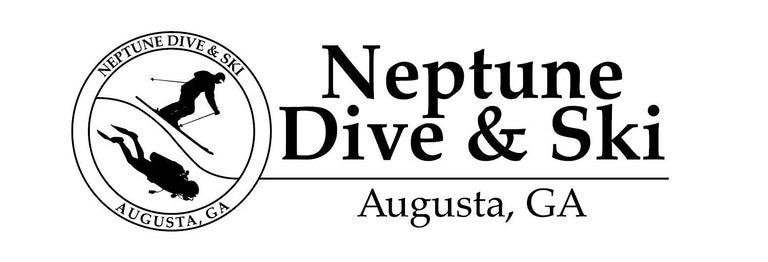Local Diving
Our local dive sites offer novice and experienced divers an excellent opportunity to enhance their skills. Each dive becomes a valuable learning experience. By spending time at these local sites, you improve your diving abilities and build confidence and experience that can be applied in all environments. Whether you're learning to dive for the first time or looking to perfect your technique, these sites serve as the perfect training ground to develop your skills and enjoy the wonders of the underwater world.
Clark's Hill Lake, East Dam
(Some people call this Lake Thurmond)
Location:
If you're coming from the SC side, take Highway 221, exits (left) from Highway 28. As you drive along 221, there are exits (not seen on Google Maps) for the lake (don't take), the Visitor's Center (don't take), and then the Overlook. If you get on the dam road, you've gone too far! Park your car in the Overlook lot (next to the dam), below the Visitor's Center. We've heard that if you put the address of the Visitor's Center in your GPS, you might get led on a wild goose chase.
Diving conditions:
In the summer, about 68-72 degrees F at the airplane (varies) - 45 degrees F in the winter; around 6 ft. visibility at the airplane, a little more at greater depths
Profile:
The airplane is in about 25-30 feet of water. If you can handle total blackout conditions, you can go more than 100 feet deep here. This is a perfect site for night/limited visibility training.
Entry:
Various entry points are available. The "usual" is to enter from the east shore next to the dam. This is treacherously steep and rocky.
What to do:
A detailed dive site map is available on the Divers of Augusta Facebook page (under the Files tab), and locals lead dives most weekends and some weekdays. Finding the airplane is pretty straightforward. Descend and head west along the dam, keeping the rocks on your left and the mud on your right. If you do this, you will always run into the plane's right wing. Lots of fish. From the airplane, lines lead in a couple of directions. It is ideal for practicing navigation skills in a low-visibility environment. There’s a thermocline at the airplane, and it's cold below that. Around the airplane, a 3mm wetsuit may be fine for you in the summer months. Up to about 50-60 ft fw, a 5mm wet suit is good. Deeper than that, a 7mm wet suit or dry suit.
Warnings:
A dive flag is absolutely essential, or you'll be fined. Watch out for jet skiers, boats, and fishermen.
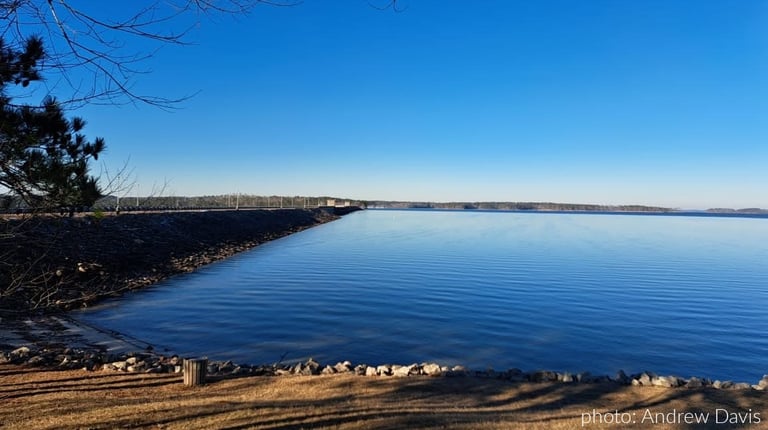

The Savannah River
Diving conditions:
About 66-72 degrees F in the summer (maybe 45 degrees F in the winter), 8 ft visibility (varies)
Profile:
15-20 ffw max, temperature 72 deg F (or less), bottom time limited only by air consumption. Current visibility varies. Depending on your cold tolerance, you can dive it year-round.
Entry:
One option is to park at 5th Street Marina and jump off the pier. The shoreline to the dock is steep, so you can just walk down the boat ramp. Best to swim upstream for a while, and then drift back to the marina. Another option is to take two cars, suit up at the Boathouse, and leave one car (with towels, etc.) there. Then, in the other car, drive up to the 5th Street Marina near Saint Paul's and enter using the boat ramp. This "Great Savannah River Drift Dive" down to the Boathouse takes about an hour, depending on the current and how much you zig-zag. After about 45 minutes, stay on the Georgia side to avoid missing the Boathouse boat ramp. Lots of stuff to see, including wrecks and old gym equipment. Folks from Neptune and from the Divers of Augusta Facebook group can show you other options.
What to do:
The Georgia side is generally more interesting. There is lots of junk, old boats, beer and soft drink cans, and an opportunity to clean up the river. SCUBA Steve has a knack for finding valuable things, some quite old, that have been thrown in the river. There is typical river fish life, turtles, and occasional snakes along the shore.
Warnings:
A dive flag is absolutely essential, or you'll be fined. Keep an eye open for fishermen; divers have been "caught." Be sure to bring a diver's tool (knife). Also, boats and jet skiers don't always know about dive flags (and consider them targets), so be careful when surfacing. Don't get swept downriver—it's a long, challenging swim back to the marina!
